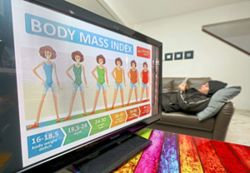Survey shows most Malaysians not interested in physical activities
PETALING JAYA: Malaysians are showing an inclination towards a sedentary lifestyle, with a higher percentage of physical inactivity compared to their regional peers.
According to the recently released National Health and Morbidity Survey (NHMS) 2023, one in three adults in Malaysia was not physically active.
Among those leading sedentary lives, half spent more than two hours a day sitting, lying down or reclining while awake.
Additionally, 84% of adults surveyed did not engage in sports, fitness or leisure activities, nor did they walk or cycle from one place to another.
“(At least) 29.9% of the adult population in Malaysia were physically inactive. This prevalence decreased compared to 2006 (43.7%). It was also observed that half (49.9%) of the adult population reported sedentary behaviour,” it said.
The NHMS 2023 Report is based on data collection sessions conducted between July and September last year.
ALSO READ: Experts: Including BMI in evaluation could be discriminatory
A total of 13,616 respondents participated in the survey, representing an overall response rate of 83.2%.
According to another report by the World Health Organisation on physical activity in 2022, 35% of males in Malaysia, aged 18 and above were physically inactive, while 43% of females in the same age group were found to be physically inactive.
In comparison, the report revealed that 34% of males aged 18 and above in Singapore were physically inactive, while 39% of females in the same age group shared this sedentary lifestyle.
In Thailand, the figures stood at 22% of males and 27% of females aged 18 and above being physically inactive.
In Indonesia, 24% of males aged 18 and above were physically inactive, along with 22% of females in the same age group.
In Japan, 34% of males and 37% of females aged 18 and above were physically inactive.
Additionally, 26% of males in Australia aged 18 and above were physically inactive, while the figure was 34% for females in the same demographic.
Physical inactivity here is defined as those who do not meet physical activity recommendations which for adults aged 18 and above, is at least 150 minutes of moderate-intensity aerobic physical activity, or at least 75 minutes of vigorous-intensity aerobic physical activity, or a combination of both throughout the week.
Prof Dr Sharifa Ezat Wan Puteh, a health economics and public health specialist with Universiti Kebangsaan Malaysia’s Faculty of Medicine, said the statistics were unsurprising, given the increasing prevalence of non-communicable diseases (NCDs) annually.
She highlighted the multi-fold implications of NCDs, including reduced productivity, decreased quality of life and also premature death and disability.
“Many factors are causing this, such as poor lifestyle choices, increasing work demand, stress, poor diet habits and sedentary lifestyles, among others,” she said.
When asked whether desk jobs could result in more sedentary lifestyles, Dr Sharifa Ezat said the nature of the work could inhibit exercise and movement, similar to other professions like cab or lorry drivers.
“A desk job only burns 57 calories for every half an hour of work. If this persists with a poor diet and high-calorie intake, it may cause a person to build up subcutaneous fat and visceral fat.
“Overweight and obesity may also lead to many other diseases such as fatty liver, hypertension, arthritis, gout, heart disease, kidney diseases, stroke and diabetes, among others,” she said.
Fitness and wellness coach Jonnath Tan emphasised the postural issues that prolonged sitting during desk jobs can cause in the shoulders, hips and lower back.
To encourage more physical movement in the workplace, Tan suggested simple habits like bringing a one-litre water bottle to work and finishing it within about two hours.
“Here, you not only stay hydrated but have to get up and head to the toilet which results in more movement. Since the volume of water is quite small, you also have to get up and refill it more often.
“This way, it’s akin to killing two birds with one stone,” said Tan, who is the lead trainer at a private training facility in Kuala Lumpur.
He said walking more daily was also a simple way to improve activity levels.
“The guideline is 10,000 steps a day but start with what you’re comfortable with and progress towards the target over time,” he said, adding that consistency was essential.













Leave a Reply